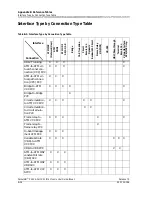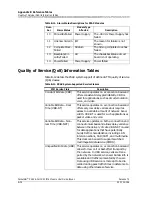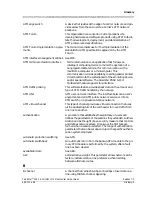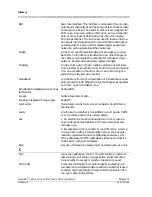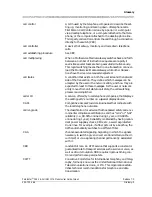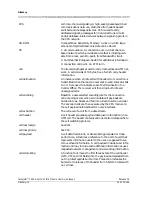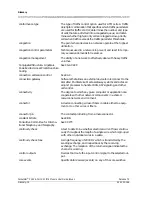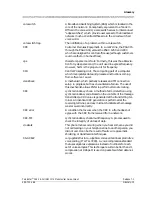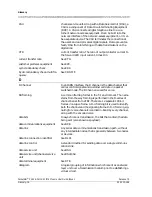
Glossary
Glossary-4
255-700-166
PacketStar
®
PSAX 6-Port DS1 IMA Module User Guide
, Issue 1
Release 7.0
AQueMan algorithm
A traffic management system that also supports ATM Forum
classes of service. This adaptive algorithm allocates bandwidth
by statistically multiplexing traffic within two sets of queues
according to weighted priorities. One set of queues addresses
the avoidance of cell loss, which is normally a concern for
data traffic, while the other manages cell transfer delay,
which is critical to voice and some video traffic.
Within each set of queues, the AQueMan algorithm assigns
internal priorities even more specialized than the ATM Forum
class definitions. Generally, the lower the assigned priority
number, the greater the access to bandwidth and the less like-
lihood of loss.
AQueView
®
Element Management
System
This PacketStar software product is a graphical user interface
(GUI)-based element management tool that is used to provi-
sion the PacketStar PSAX Multiservice Media Gateway sys-
tems. The AQueView system enables a network of PSAX
products to be managed and provisioned with easy-to-use
windows from a single location.
architecture
The design of the hardware and software components of a
system that controls how all the various components interop-
erate with each other and with other devices or systems.
ARP
address resolution protocol. This low-level protocol maps IP
addresses, or other non-ATM addresses to the target ATM
device. Once the ATM device has been identified, an ARP
server can send it data, as long as the session is maintained.
ASCII
American Standard Code for Information Exchange. This cod-
ing standard specifies the representation of characters in a
binary format.
AS-PVC
adaption service permanent virtual circuit. This type of circuit
allows ATM adaptation services to be connected by ATM
switched virtual circuits. AS-PVC specifies parameters (such
as circuit emulation) for the sending device, specifying the
receiving device.
asynchronous transfer mode
See ATM.
ATM
asynchronous transfer mode. This cell-switching technology
converts multiple incoming streams of information into fixed-
length cells of 53 bytes, that are composed of a 48-byte infor-
mation field and a five-byte address header. ATM enables
high-speed transmission of data, voice, and video over the
same lines, at speeds up to 13.22 Gbps.
ATM adaptation layer
See AAL.
ATM addressing
This addressing scheme enables an operating system to find a
specific piece of ATM information in the application memory.
Every memory location has an address. ATM addressing pro-
vides user-specific virtual path identifier/virtual channel iden-
tifier (VPI/VCI) coding, bandwidth allocation, and quality of
service (Qos) information.

